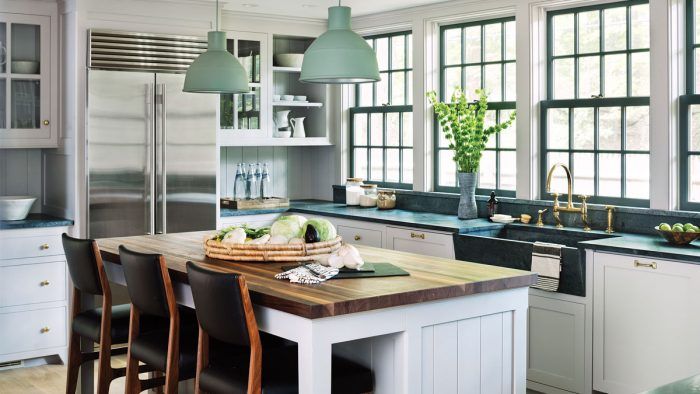Traditional at First Glance
With hints of the Shaker style, this kitchen's more modern leanings are subtle, but important.

Synopsis: This home, originally built in 1830, was remodeled and added onto regularly over the past nearly 200 years, meaning the kitchen needed some work to make it ready for a new family’s changing needs. The design choices are sensitive to the history of the house, including windows with the same pane proportions as the originals, deep green colors commonly found on the doors and shutters of historic homes in the Northeast, and soapstone counters that will wear with age. And by incorporating more modern elements as well, the kitchen is both reminiscent of the Shaker style, but updated for modern time.
Nestled in the heart of Westchester County, Bedford, N.Y., is within reasonable commuting distance to Manhattan with its own stop on Metro-North Railroad’s Harlem Line. To those not familiar with the landscape of New York’s Hudson Valley, that may conjure images of cookie-cutter neighborhoods. The area is home to many of New York City’s daily refugees, but it is also home to farmland, dirt roads, and some of the most charming antique houses in the country.

This kitchen is in one such home. A homesteader’s dwelling originally built in 1830, the house started as an understated, one-and-a-half-story farmhouse and was remodeled and added onto regularly over its nearly 200-year history, most recently when it was purchased by a family with three young children. They were attracted to the idyllic stream that runs through the property, the backyard pool where their children could make summertime memories, and the house’s storied character. Charming as it was, it would take some work to make the house livable for the new family, who like to entertain. The kitchen would have to do some heavy lifting.
To help get the design right, the owners hired Rafe Churchill. Rafe is a co-founder of Hendricks Churchill, an architecture and interior design firm in Sharon, Conn., and is fluent in early American architecture and the new/old-home aesthetic.
“This was clearly an evolved house,” Rafe explains. “The last family owned the house for 40 years, and it had been shaped to their changing family needs. The goal was to start over and to make it work for this family, and to accommodate guests.”
 From Fine Homebuilding #295
From Fine Homebuilding #295
To read the entire article, please click the View PDF button below.

